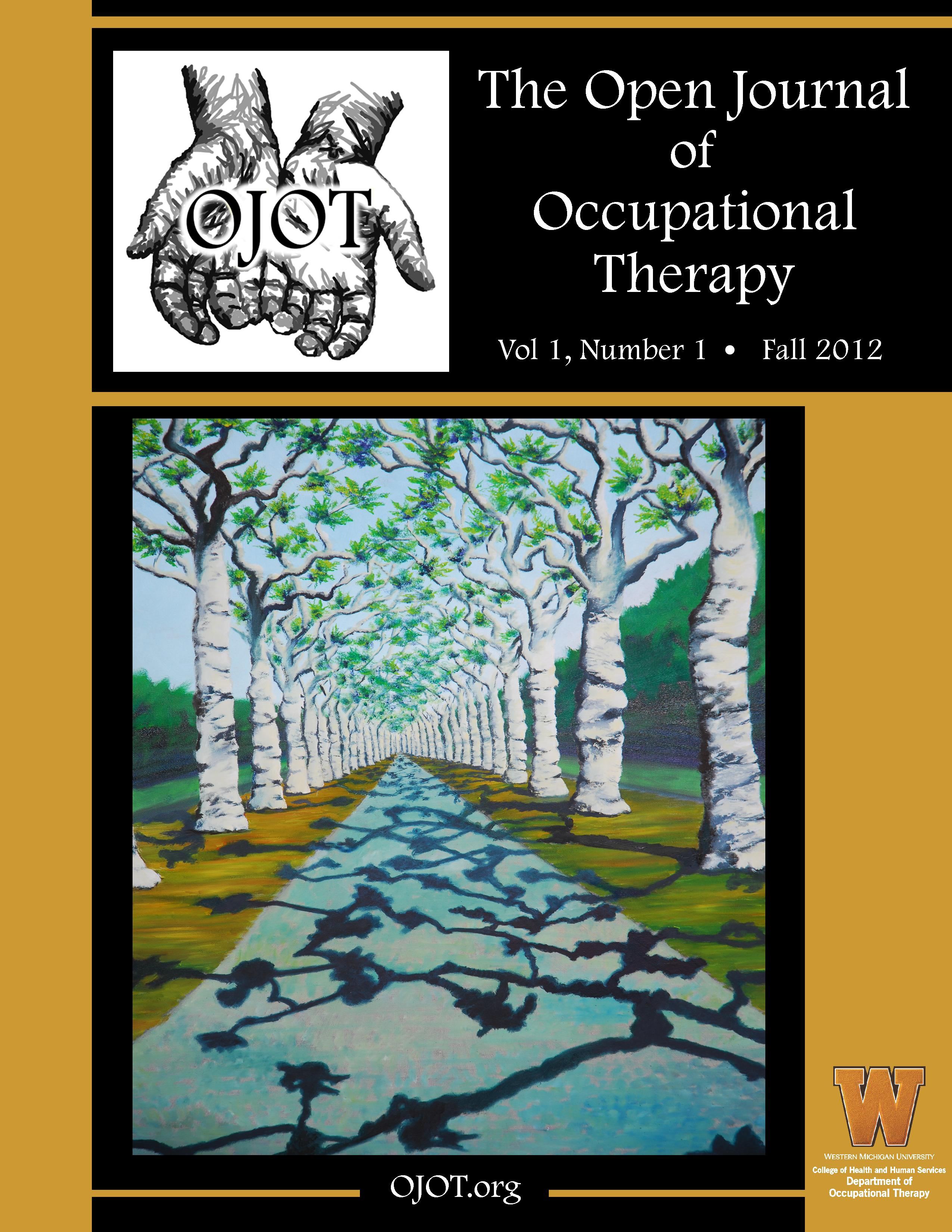ScholarWorks > HHS > OT > OJOT > Vol. 10 > Iss. 1 (2022)
Credentials Display
Elinor Pastore, OTD; Daniel Ryan, OTD; Lisa Knecht-Sabres, DHS, OTR/L
Abstract
Introduction: The objective of this research study was to gather a greater understanding of how occupational therapists provide education to caregivers of stroke survivors and how they address the needs of caregivers throughout the rehabilitation process.
Methods: The researchers used a convergent mixed methods design. RedCap electronic surveys containing both open-ended and closed-ended questions were completed by 90 participants from multiple states. A focus group (n = 8) and a one-on-one interview (n = 1) were conducted to gather qualitative information regarding occupational therapists’ perspectives related to their experiences on educating caregivers in the acute rehabilitation setting. Descriptive statistics were used to analyze quantitative survey data. The focus group and the one-on-one interview were recorded and transcribed verbatim. Qualitative data were thematically analyzed. Interviews were coded individually and re-coded until consensus was reached. The results across data were compared to identify themes. Rigor was enhanced through the use of multiple coders, member checking, expert review, and triangulation of the results.
Results: The survey results (n = 90) revealed the occupational therapists’ top five topics for caregiver education for stroke survivors: toileting (94.4%); dressing (94.4%); bathing (94.4%); functional mobility (91.1%); and hygiene/grooming (75.6%). Yet, 22% of the occupational therapists surveyed indicated they provided education only during the week of discharge, and 37.8% specified they only spent 15 min of education during an intervention. Five themes emerged from the qualitative data: (a) caregivers and stroke survivors have different needs, (b) occupational therapists must hurdle a variety of barriers when providing education, (c) access to various supports at the workplace is beneficial when providing caregiver education, (d) occupational therapists use a variety of methods to administer caregiver education, and (e) occupational therapists tend to prioritize ADL tasks during education.
Conclusion: Clients and caregivers have a plethora of educational needs related to enhancing safety and independence with daily occupations prior to discharge from inpatient rehabilitation. Occupational therapists play a vital role in educating the caregiver as a means to enhance an individual’s quality of life and in easing the transition into the home environment after inpatient rehabilitation. The findings from this study highlight the common methods used for education by occupational therapists, as well as the challenges faced when providing caregiver education.
Recommended Citation
Pastore, E., Ryan, D., & Knecht-Sabres, L. J. (2022). Occupational Therapists’ Perspectives on Caregiver Education of Stroke Survivors. The Open Journal of Occupational Therapy, 10(1), 1-16. https://doi.org/10.15453/2168-6408.1881



Comments
The authors declare that they have no competing financial, professional, or personal interest that might have influenced the performance or presentation of the work described in this manuscript.